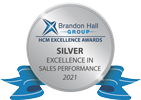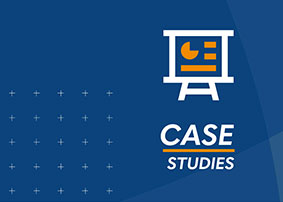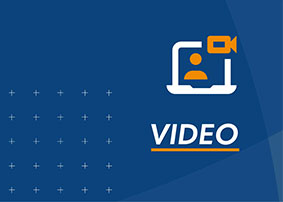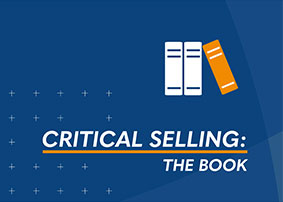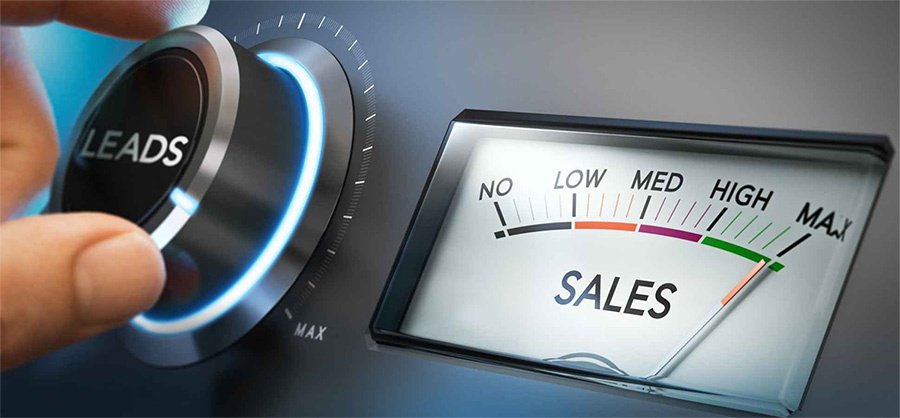A Comprehensive Guide to Lead Generation

Lead generation is the process of attracting new prospects and converting them into business. Leads come from several different areas of inbound and outbound efforts, and not all are prequalified as true potential customers to meet a company’s revenue goals. Knowing where leads come from, the cost of gaining a new lead, and learning how to qualify them are all parts of the lead generation process.
What is lead generation in sales and why is it important? Ultimately, lead generation marketing is vital to increase sales and gain new business, so having the right skills and enablement strategies in place to identify and utilize these leads is imperative. However, there are other important benefits of focusing efforts in this area that support the overarching goal of higher revenue. These benefits include:
- Increased brand awareness among target audiences
- Ongoing communication with customers already interested in your business
- Maintaining a strong competitive presence within the industry
Each of these areas defines your company’s relevancy among potential clients and existing customers. Diving into the details of what is lead generation and understanding how well it’s working is crucial to a successful sales process. It involves:
- Differentiating marketing-qualified leads from sales qualified leads
- Identifying multiples types of lead generation processes and tactics
- Prioritizing lead generation strategies
- Learning how to improve lead gen
- Expanding efforts with sales enablement
Whether you want to incorporate new digital marketing tactics or revamp current sales strategies, lead gen plays an essential role in building momentum and maintaining success.
Differentiating Marketing-Qualified Lead vs. Sales-Qualified Lead
For each lead that comes in, it’s helpful to attach a lead score to assess their value. Not all leads are scored the same, but each brings value to a company. A high score equals a sales-qualified lead, while a lower score equals a marketing-qualified lead and may need more nurturing before making a buying decision. Companies assign their own lead scoring system as it aligns with their business. Points are attributed to actions prospects take on the site or in-person. These may include:
- Website visits
- Newsletter signup
- Viewing a webinar
- Scheduling a demo
- Filling out a contact form
- Downloading a free resource
Moving prospects through the lead generation sales funnel process is a strategic way to turn interested customers into qualified sales.
A marketing-qualified lead is any person that discovers your business through inbound marketing efforts, such as a social media presence or an in-person networking event. These are people who are interested in learning more about your company, services, and products but may not be ready to buy yet. Over time, these leads can be nurtured and eventually turn into sales-qualified leads when the time is right. Usually, the barriers at this stage are budget and immediate need.
A sales-qualified lead is any prospect that meets the criteria set forth by your sales team that has the budget and interest to move forward in the process and convert as a sale. These types of sales leads are prequalified via business development representatives. They can also be prequalified through digital marketing efforts. A good example of this is a landing page with a call-to-action and lead capture form. Calls-to-action like “Buy Now” or “Schedule a Product Demo,” outline information that qualifies prospects and signals a lead is ready to buy.
Identifying Multiple Types of Lead Generation
Diversifying lead generation methods helps to attract new customers through channels they are already using. Prioritizing the top mediums that your target audience uses makes sales efforts more effective. For example, if your target audience is an older demographic that prefers a phone call or email, then social media may not be the ideal medium for lead gen efforts.
It’s important to measure the effectiveness of all lead generation strategies before automatically assuming a trend. Types of lead generation include:
- Cold outreach (phone calls or emails)
- Content marketing
- Social media connections
- Public relations
- Live events and conferences
- Speaking engagements and leadership groups
- Landing pages
- Networking (online and in-person)
- Webinars, demos, and presentations (online and in-person)
Prioritizing each of these areas includes understanding how each process works and the level of engagement you hope to achieve. Assigning metrics to the methods used will help track success rates and allow you to make more data-driven decisions regarding budget and resources. Two often used methods for lead-generation marketing are cold outreach and content marketing. One focuses on outbound efforts while the other is a significant part of inbound marketing.
Cold Outreach for Outbound Lead Gen
Cold calling or cold emails is a traditional sales method that’s been commonly used for decades. This type of lead-generation strategy usually applies to entry-level sales roles as a way to qualify potential new business before bringing the lead in-house and handing it off to a sales rep. Concise value messaging through a sales script and gaining critical prospect data are important parts of this process.
Cold calling as a lead generation tactic has long been used as a number game. Sales reps are normally responsible for hitting a set call or email quota per day and measuring the effectiveness of those results. To improve the effectiveness of cold outreach, it’s highly recommended to employ a strategy that defines the target audience and tailors the messaging to their top needs. With the rise in technology and the desire for customized services, people aren’t as inclined to respond to this kind of communication as they once were. Most prefer connecting with someone when they know something about the brand or have shown previous interest. Here is where content marketing supplements outbound efforts.
Content Marketing for Inbound Lead Gen
With the majority of people reliant on their smartphones for information, content marketing is one of the biggest sources of lead generation. This digital marketing lead generation effort involves creating blog posts, e-books, newsletters, and other types of content that inform a potential customer. Each content piece highlights the value of a company’s products, services, and leadership potential in the industry.
Content marketing also helps bring visibility and a sense of trust to those who may be unfamiliar with your product or service offerings. Plus, it can provide answers to frequently asked questions to help prequalify prospects before they make the first contact. Results can be measured on a regular basis to help guide strategy and allocate the proper resources.
Metrics associated with a content marketing strategy may include website pageviews, e-book downloads, and newsletter subscriptions. Building a client base through this lead generation strategy takes time and consistent effort but is part of successful long-term strategies to attract and maintain quality client relationships.
Prioritizing Lead Generation Strategies
Lead generation requires researching, reviewing, and altering strategies to improve the quality of leads. Quality is more valuable than quantity when determining which to prioritize. Having an influx of new leads sounds promising to hit revenue targets. However, the time and costs necessary to review and secure leads are not money or resources well spent if they’re not converting.
There are several lead generation strategies to choose from, but not all are necessarily appropriate for every company. Establishing quality leads is a top priority for most organizations in order to maximize their returns on investment. It helps to improve conversion rates, ROI, and higher customer satisfaction. To figure out what drives the most qualified leads, you may need to try out a number of lead generation qualities. Test out a few different approaches and see what works best in driving your leads to convert.

How Sales Teams Can Improve Lead Generation
The process of lead generation and improving sales lead quality involves identifying target audiences, offering value to consumers, and connecting with prospects. This is achieved through tactics including automation, lead nurturing, and shifting budgets to focus on the most promising results.
Lead Gen Automation
One of the best ways to improve lead-generation strategies is to set up workflows that automatically segment leads into different categories. This reduces the time and effort needed to garner the most qualified leads. A CRM, as well as sales and marketing automation applications, can perform this function when parameters are set up properly. This will help your team to prioritize inbound lead generation from most to least important.
A new lead that is most qualified can be handed off to your sales team to move into the discovery stage. Those who aren’t ready to get started and want more information can be funneled into the learning part of the sales process and be handled by a business development team member. Understanding the importance of a business development phase will be integral to a cohesive lead gen strategy.
Lead Nurturing
Additionally, knowing where the majority of leads are coming from is essential. Many teams create lead nurturing through social media and paid ad campaigns. Being competitive in this space can be costly if you’re not tracking audience engagement and cost-per-click on a regular basis.
Setting weekly and/or monthly budgets is critical. Also, reviewing conversion rates on a regular basis and sharing this data with your marketing team will help determine future resource allocations and other avenues of lead generation that may be less costly and more effective.
Lead Costs
Lastly, to boost lead gen efforts, knowing how much each lead costs makes a difference in achieving sales goals as well. For example, if a company attracts a majority of qualified leads through speaking engagements, the investment should be allocated accordingly within the overall budget. Expenses for this may include travel, branding, and other outbound marketing engagement before, during, and after the event.
Regardless of the lead gen method, the ultimate goal is to find the most cost-effective way to generate the most revenue possible.
Taking Lead Generation to the Next Level with Sales Enablement
Evaluating which lead generation strategies are working and which areas need improvement requires ongoing guidance and insight regarding the performance and effectiveness of a sales team. The success of a sales team relies on good communication, strategic allocation of roles and responsibilities, and alignment of common goals and structure. Sales enablement provides the tools, resources, and training necessary to achieve continual success.
Focusing on training efforts will help unlock a sales team’s potential and make every sales interaction a valuable learning opportunity. Meanwhile, reinforcement with sales coaching transforms short-term progress into long-term solutions to establish more quality leads and lasting client relationships. That’s why, at Janek, we offer a number of sales training and coaching programs to bring your organization’s skills to the next level.
Sources:

- Account Planning (16)
- Awards (42)
- Client Testimonial (37)
- Personal Branding (21)
- Podcast (12)
- Research (77)
- Sales Career Development (90)
- Sales Coaching (165)
- Sales Consulting (141)
- Sales Culture (181)
- Sales Enablement (380)
- Sales Leadership (112)
- Sales Management (268)
- Sales Negotiation (11)
- Sales Prospecting (136)
- Sales Role-Playing (19)
- Sales Training (242)
- Selling Strategies (279)
- Soft Skills (78)
- Talent Management (101)
- Trusted Advisor (29)
- Virtual Selling (57)
- Webinar (13)

